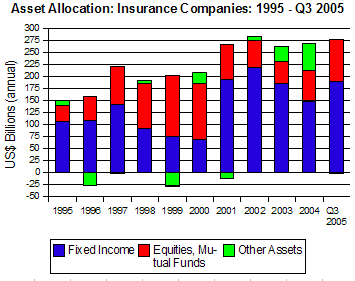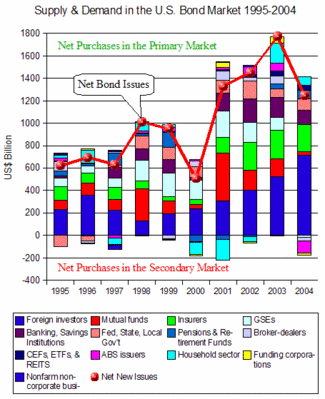Life Insurers Still Favor Bonds: Q3 2005
by John Schroy filed under Treasuries, Open Market, Agencies, Mortgages, Corporate Bonds, Insurance Executives
Life insurance companies invest pension and life insurance reserves primarily in bonds, according to Federal Reserve Flow of Funds Table F117 for Q3 2005.
As the graph shows, although life insurers directed a large portion of cash flows into equities and mutual funds in the years 1998-2000, they returned to a more conservative position after the stock market crash of 2000-2001.
 Life Insurers' Assets
|
||
The graph suggests, also, that life insurance has not been a growth industry since 2001, with the volume of new funds flowing into portfolios holding more or less steady.
However, over the decade, there has been growth.



